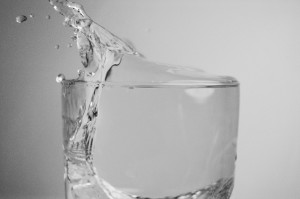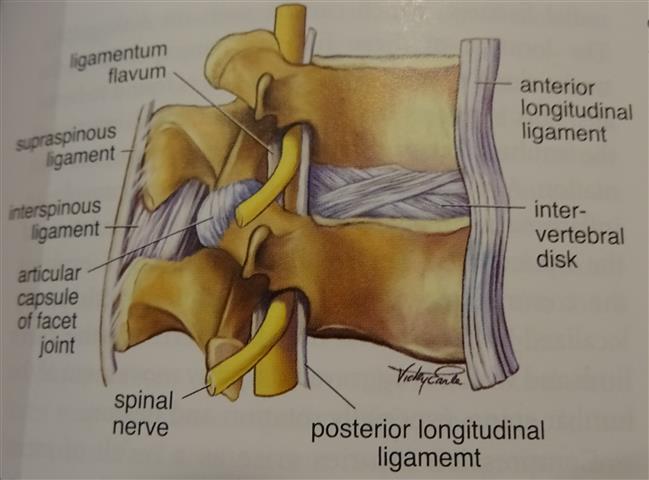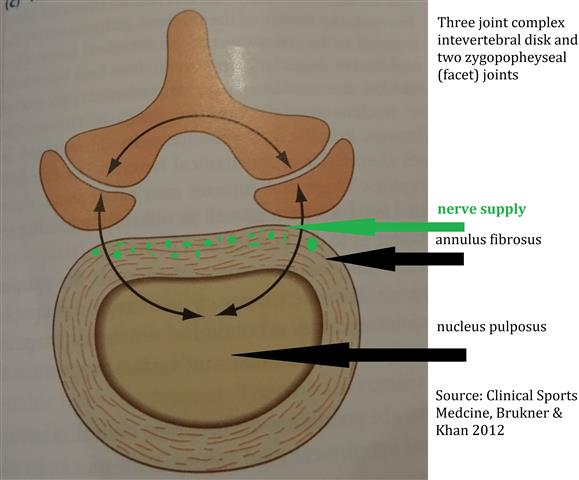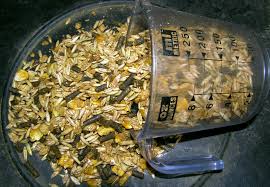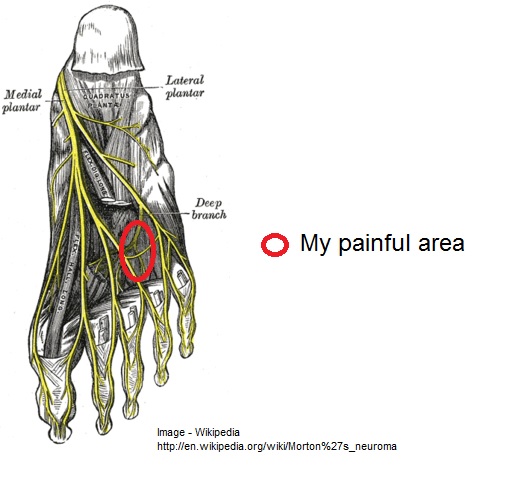
Snowboarding is amazing fun. Especially in deep soft powder snow. It’s like surfing on a cloud in marshmellow land. However, these are special conditions. Most of the riding happens on the pistes or courses with smooth but somewhat harder surface.
During my recent travels I developed a bit of a painful foot issue. I was snowboarding almost daily and being experienced rider I would ride quite aggressively. After a time I developed a sharp neural pain on the sole of my right/back foot on the snowboard. This was towards the front on the ball of my foot between the 3nd and 4th toes (Plantar aspect of the distal head of the 3rd and 4th metatarsals). Sudden impacts would trigger an electric exquisite pain. At times so intense it would take the breath away and the vision would fade. It would only happen while snowboarding. Otherwise I have had no troubles with my feet with physical activity/running etc. Needless to say it was a bit of a concern and reducing the enjoyment I was having.
I believe the intensity of the downwards pressure towards the board was causing a tendonitis and inflammation of the metatarsal phalangeal junction. A ski boot fitter was of the opinion I was starting to develop a Morton’s neuroma. I would concur with this but would also consider capsulitis.
Solution
I treated myself with acupuncture directly on the problem area with associated points for the foot around the ankle. Some of the needles went directly into the sole. It was refreshing but also satisfying feeling. I followed up with some moderate pressure massage and gentle mobilisation of the foot bones. I repeated this 3 times and it had a good effect.
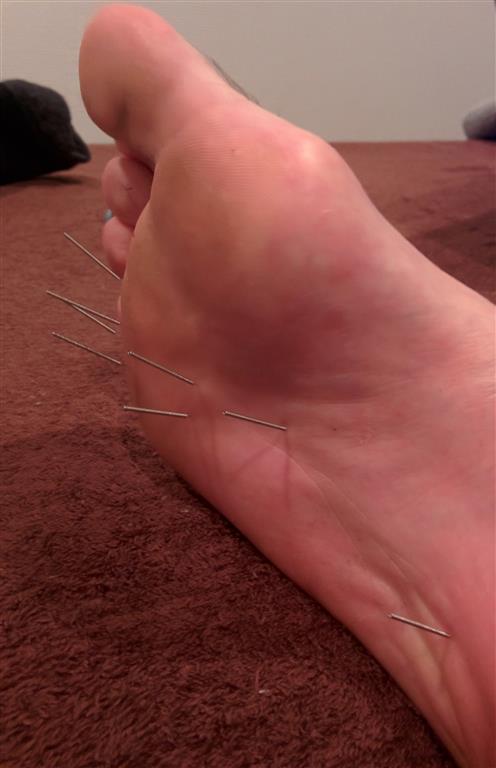
Next thing was to reduce the pressure that was placed on the foot by the boot. Josh the boot fitter (Boot Solutions, Hakuba, Japan) made some custom “neuroma pads” that went into the innersole of the snowboard boot. This provides a greater contact surface area for the ball of the foot, spreading the load more evenly over the sole of the foot. The pad also splays or separates the metatarsals (long bones of the foot) a bit more. This provides more space for the nerves that travel between the toes.
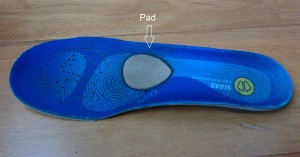
This combination worked very well. I’m happy to report in my particular case this reduced the problem to a level that was not too noticeable. I consider this to be a good result. Wearing snowboard or ski boots has an inherent level of discomfort. It is normal and to be expected. Having said that, when the discomfort becomes too unbearable it is good to know there are solutions out there.

